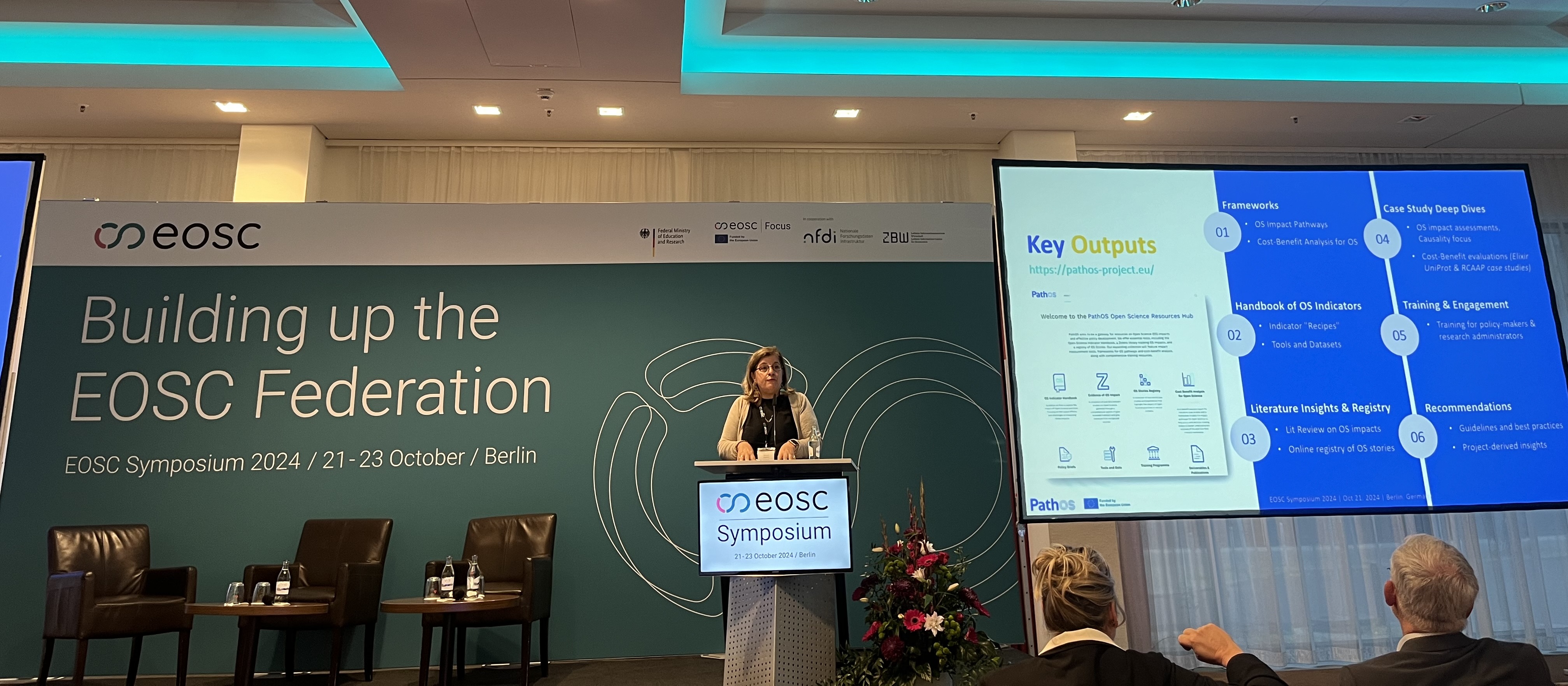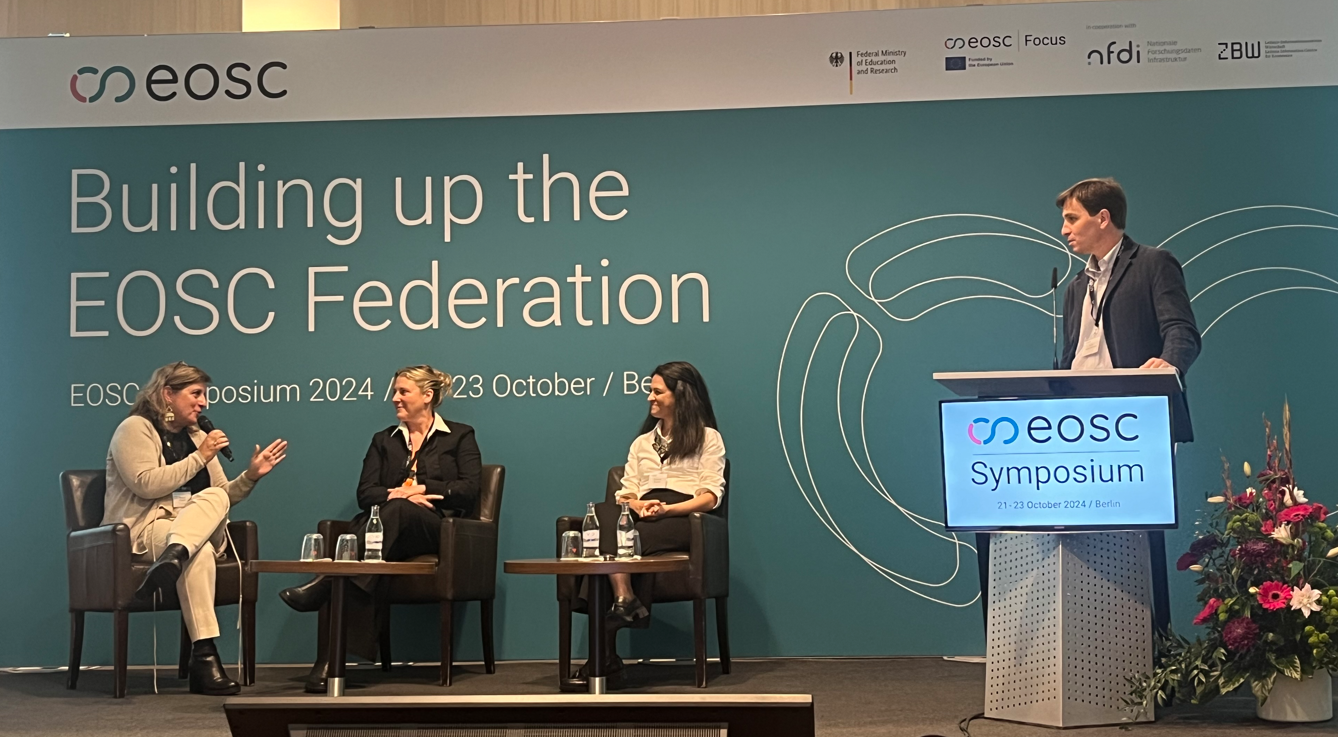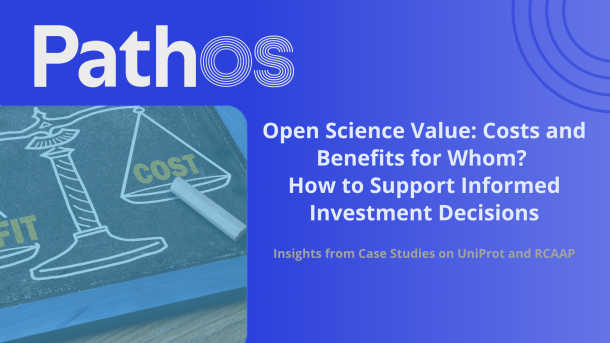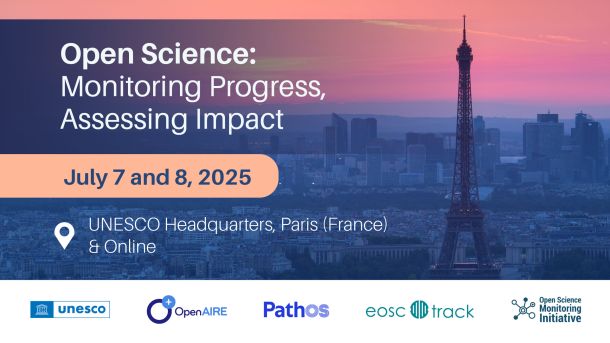Measuring the Impact of Open Science: Insights from PathOS at EOSC Symposium 2024

As the European Open Science Cloud (EOSC) evolves, the need to demonstrate the tangible impacts of Open Science becomes increasingly critical. The EOSC Symposium 2024 serves as a vital platform for addressing this, bringing together researchers, policymakers, and industry leaders to explore how Open Science practices translate into real-world benefits.
One of the core topics on the first day of the symposium was the importance of measuring and assessing the impact of Open Science initiatives—whether in terms of societal advancement, economic growth, or academic progress. Effectively understanding these impacts is essential for ensuring that Open Science continues to receive the necessary investment, support, and innovation to thrive. The PathOS project was at the forefront of this effort, with Natalia Manola from OpenAIRE and Despoina Sousoni from ELIXIR presenting project methodologies and results.

“Impact comes in many shapes and forms, very often intangible. Are we investing in the right instruments to truly realize the promise of Open Science? What key pathways and enablers are driving the impact?” — Natalia Manola, OpenAIRE
Natalia began by presenting the PathOS literature review, which focused on the available evidence of impact. Academic impact, traditionally measured by citations, has the most comprehensive evidence, but is expanding to include ethics, diversity, equity, inclusion, and openness. Societal impact has been studied mostly through Citizen Science, though more research is needed to assess its effects on policy, health, and climate change. Economic impact is the least explored due to limited data, especially outside the medical and biotech sectors. Regarding measurement, academic indicators are well-established, but societal and economic indicators are still emerging. The review also identified challenges, such as the lack of standardized metrics and difficulty in proving causality. Addressing these gaps requires more robust indicators to fully capture the impact of Open Science.
One of the key innovations of the PathOS methodology is how it leverages Big Data and AI to map causal pathways, enabling more precise attribution of impacts from Open Science practices. By integrating extensive datasets like the OpenAIRE Graph, with its 180 million publication records and 4 million research projects, alongside PATSTAT, a global patent database with over 200 million patent records, PathOS can comprehensively track the entire research lifecycle. Natalia emphasized how these resources allow PathOS to create control groups that compare OA research with non-OA trajectories, offering deeper insights into the impact of Open Science on innovation, collaboration, and economic growth. This powerful combination of OpenAIRE and PATSTAT as Big Data tools provides a precise understanding of how Open Science drives both academic and industrial advancements.
Open Data for Innovation: Insights from the PathOS Case Study and EOSC-BY-COVID Project
Then, Despoina presented the PathOS case study on understanding innovation from open bioinformatic resources and highlighted the findings of the EOSC-BY-COVID project on the industrial value of open data from the COVID-19 Data Portal and the critical role they played in driving innovation during the pandemic. She emphasized the importance of referencing the open data resources in patents as a way to measure a form of innovation and the need to give visibility to good practices, as this is not always a common practice for industrial users.
Her presentation showed that over 1,000 COVID-related patents reference at least one COVID-19 Data Portal resource. Companies like Mammoth Biosciences and BioNTech are at the forefront, as they seem to reference the examined open resources in many of their COVID-related patents. Despoina also noted that 363 scientific publications referenced the portal itself, many of which included contributions from for-profit companies (more information can be found in this report).
A key challenge discussed was the difficulty of tracking how the industry uses open data, as many companies do not always publicly acknowledge their use of these resources. To address this, Despoina’s team combined quantitative patent data and qualitative interviews, which showed that public-private collaborations were essential for fostering innovation and adaptability. Further findings of the PathOS project demonstrated how open biodata resources like UniProt are deeply embedded in both academic and industrial R&D.
Despoina also presented the results of a Cost-Benefit Analysis (CBA), which showed that while companies benefited from reduced research costs and time thanks to easy access to open data, larger firms face challenges transitioning to new open resources. Her presentation concluded with a call for ongoing investment in open infrastructures to ensure continued support for future industrial innovation and measuring relevant impact.

Following the presentation, a vibrant discussion ensued, with the audience posing many questions on best practices for measuring (Open) Science impact. The dialogue focused on the entire process—from setting clear objectives, to defining KPIs, and making investments in infrastructure and capacity to measure both data and impact effectively. A key takeaway from the discussion was the critical need to not only build the infrastructure but also provide training for research managers and policymakers. This would ensure they have the skills to navigate complex data environments and implement robust impact assessment frameworks, ultimately fostering a deeper understanding and more effective use of Open Science practices across sectors.
Blog post written by Natalia Manola & Desponia Sousoni. Photo by Angeliki Tzouganatou.
Written by
Latest Articles

Open Science Value: Costs and Benefits for Whom? How to Support Informed Investment Decisions

Press Release: Conference on Open Science: Monitoring Progress, Assessing Impact
